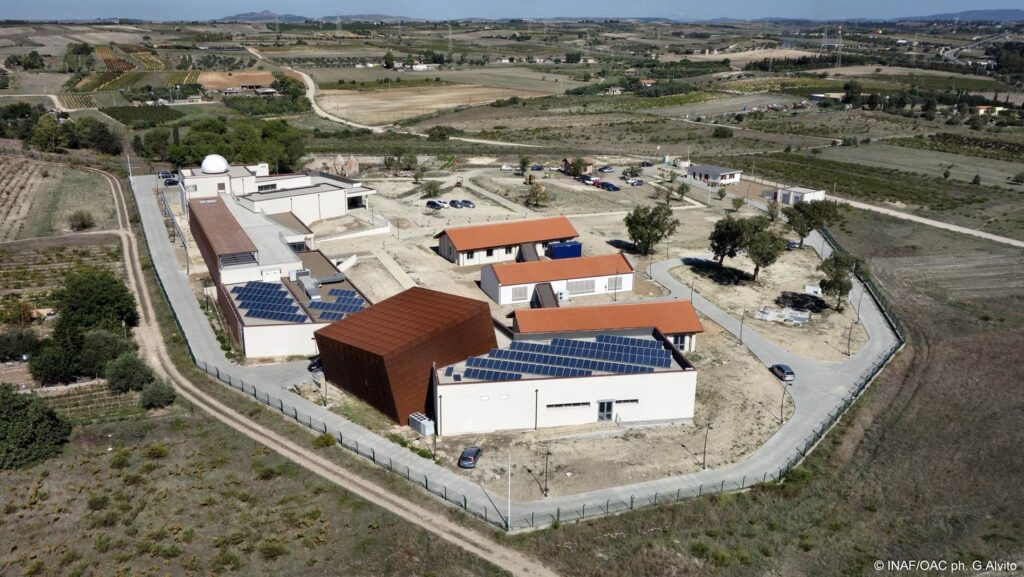Originally conceived as a simple outpost of a high-profile national and international scientific circuit, whose governance intellect would have been easily located outside the Island, the Sardinia Radio Telescope (SRT), thanks to a series of forward-thinking and consistent initiatives undertaken by the Regional Government and the University of Cagliari, now stands as a driver of scientific and technological development in the area.
Last Friday, Prof. Lucio Piccirillo, Professor of Radioastronomy Technologies at the University of Manchester in the UK, acknowledged this with satisfaction. On behalf of Minister Giannini, he completed the final evaluation of the Sardinia Radio Telescope Project with a visit to Sardinia.
The realization of the Sardinia Radio Telescope (SRT) is linked to important development choices made by the Ministry of Research in the late 1990s, formalized in D.M. November 4, 1997, nr. 648, “Plans for strengthening the scientific and technological network in depressed areas.” With the subsequent Memorandum of Understanding between the National Research Council, the Italian Space Agency, and the Autonomous Region of Sardinia, the project received further funding and was then taken over by the National Institute of Astrophysics in 2003, following the reorganization of Research Entities. Here lies the dual challenge: not just a scientific outpost, but also a driver of local development.
During Prof. Piccirillo’s visit, primarily aimed at verifying the correct achievement of the original objectives, it was also useful to assess the impact the project has had—thanks to the attention of local political, academic, and scientific institutions—both on the territory and on local scientific and technological development. This impact demonstrates a formidable process of capitalizing on the original government initiative.
Already during the construction phase of the facilities, out of about forty industrial actors and professionals involved in the project, about thirty are located in Sardinia, with an estimated economic impact of about 25 million euros. In the realization of a highly technological work like a modern radio telescope, it is not a given that contracts and tenders will benefit the territory. In the case of SRT, local involvement has been quite significant, indicating that the local reality was certainly ready to capitalize immediately on the original government initiative.

But the Region and the University have gone far beyond. The Region, in addition to the funding of about 5.5 million euros for the SRT building infrastructures, agreed with MIUR at the start of the Project, has implemented a series of actions and financial interventions that have transformed the Cagliari Observatory (OAC) into a vibrant and authoritative scientific and technological reality on a national and international level, with its new headquarters in the Science Campus adjacent to the University Citadel, new development laboratories, and educational and outreach facilities.
[In the image, aerial view of the new INAF-OAC headquarters]
A significant local financial intervention, almost 20 million euros, sees Sardinia at the forefront of its ability to capitalize on structural interventions.
At the same time, the University has contributed to creating a nursery of young talents in astrophysics, radio astronomy, and related technologies, with the activation of specialized study paths in the Departments of Physics, Electrical and Electronic Engineering, and Environmental Engineering. Many of these young people are now successfully engaged in scientific and technological activities related to the development of SRT.

Welcoming Prof. Piccirillo, with a packed agenda of interventions: Andrea Possenti, Director of OAC; Luigina Feretti, Director of the Institute of Radio Astronomy in Bologna, and main Spending Center of MIUR funding; Nichi D’Amico, Full Professor at the University of Cagliari and outgoing Director of the Project; Luca Stringhetti, “Assembly and Integration Verification” (AIV) Manager; Isabella Prandoni, Project Scientist of SRT; some members of the large team from Bologna and Cagliari who together contributed to the success of SRT, including Andrea Orlati, Marco Poloni, Tonino Pisanu.
[In the image, group photo at SRT]
Prof. Piccirillo then visited the antenna and the control room. In the afternoon, the work continued at the city headquarters of OAC, in the new Science Campus, where Prof. Piccirillo visited the new research and development laboratories and the educational and outreach facilities funded by the Region.
At the end of his visit, Prof. Piccirillo stated: “First of all, I thank you for the magnificent hospitality and cordiality of the local radio astronomy group. I have been away from Italy for many years—despite maintaining scientific relationships with some fellow astronomers. It is the first time I have the honor—and the burden—of chairing an evaluation committee for an important project in Italy, and I must say I am favorably impressed by the availability, technical and administrative competence, as well as the scientific expertise of the colleagues I met in Cagliari. I was able to admire the Sardinia Radio Telescope up close and observed the quality of the work done in designing, building, assembling, and verifying the various functionalities of the telescope. I now face a couple of weeks of work to draft the final report, but I can anticipate that, from a technical point of view, the project certainly places Italy—and Sardinia in particular—at the technical forefront in the field of radio astronomy worldwide.”